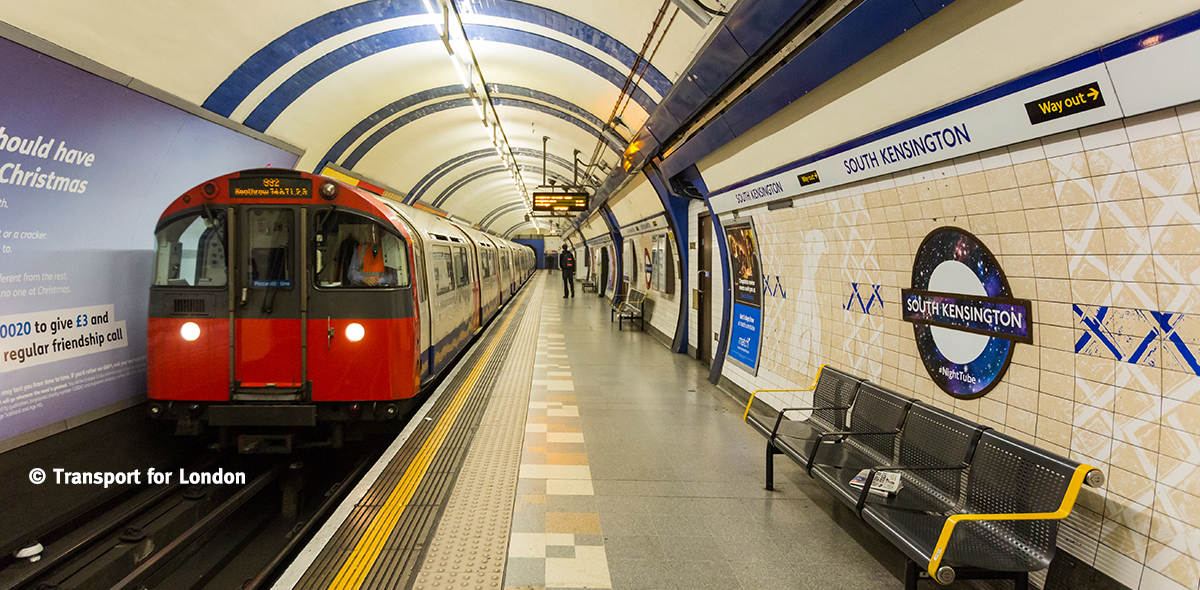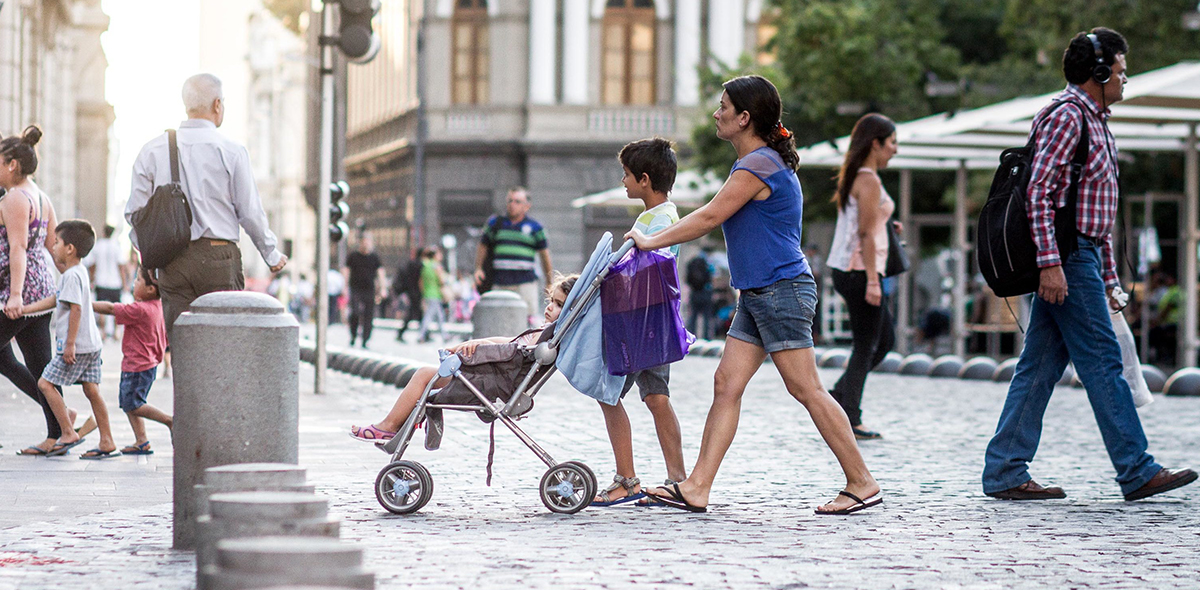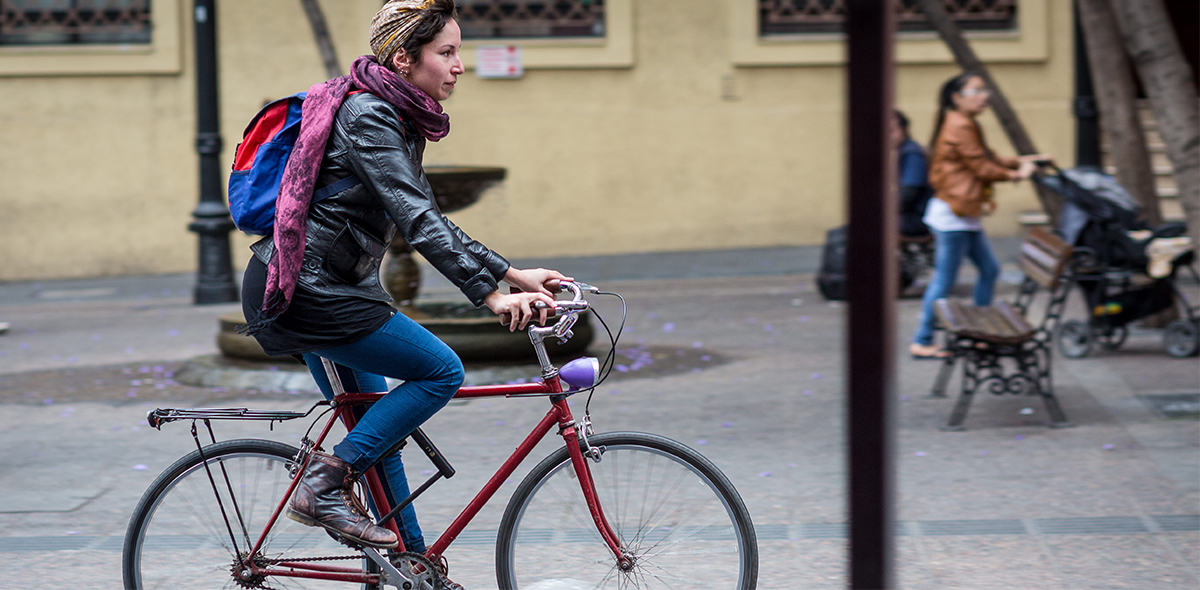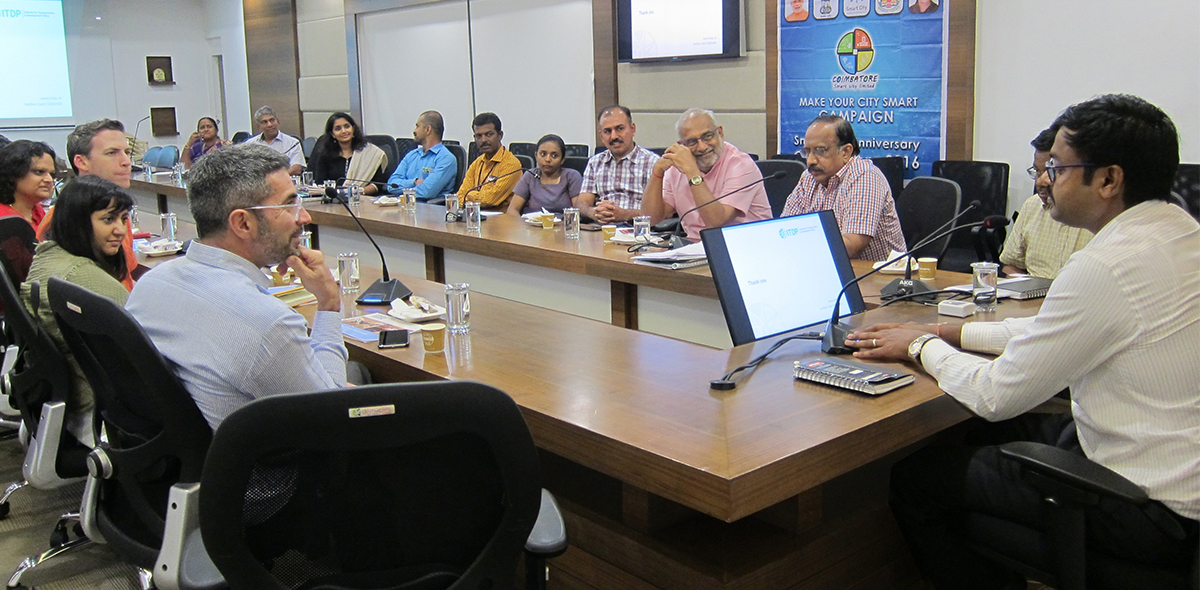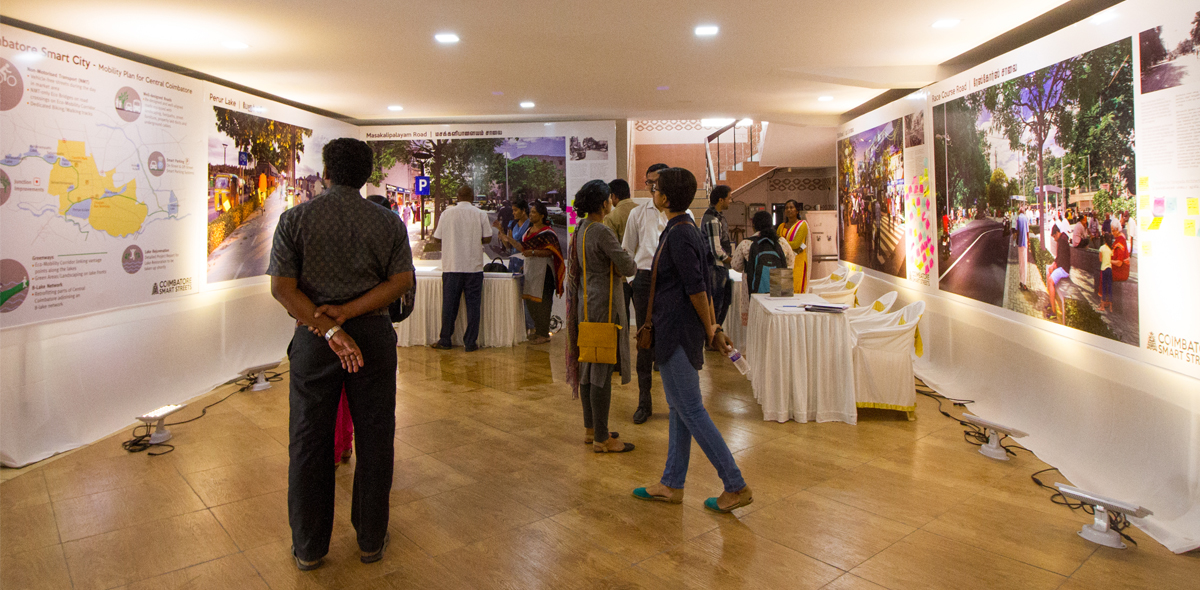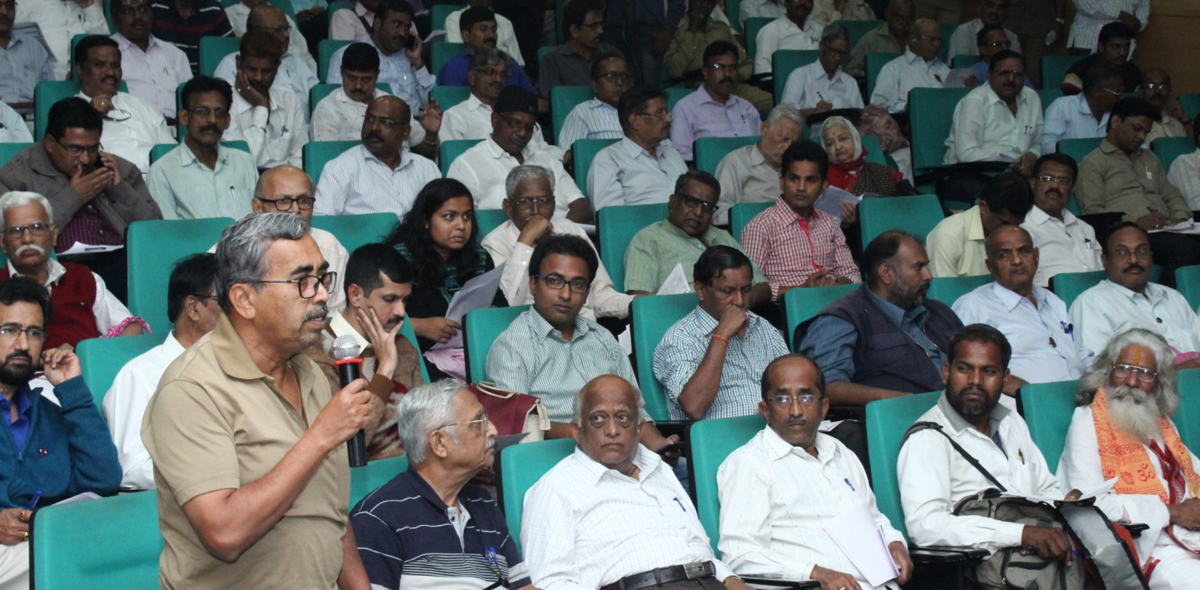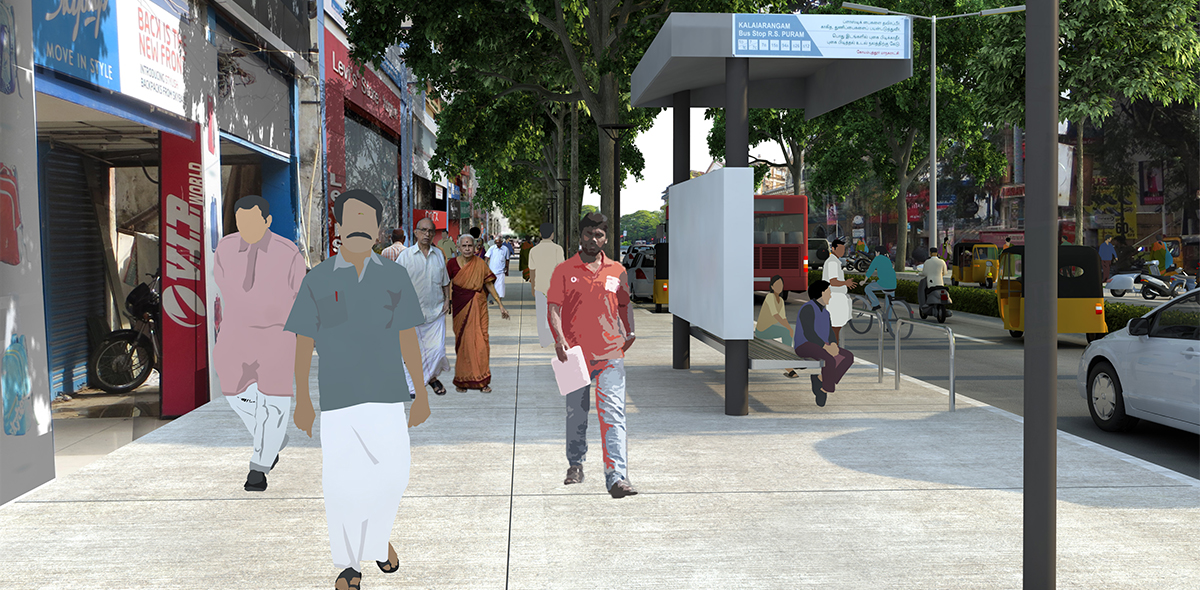Founded in 1863, the world-famous London Underground, also known as the Tube, may just be the planet’s most iconic subway system, from its “mind the gap” warning to its circular red logo to its storied history as a bomb shelter during World War II. While it transports a hefty 1.37 billion passengers annually, up on street level, the city’s equally iconic red buses – many of them the ever-popular double deckers – host more than 2 billion passenger trips per year.
Enter Simon Lusby, a senior strategist at Transport for London, the British capital’s transit agency. He’s part of the surface transport team, which means even if the Tube is the symbol of London mobility, he is working daily to make sure the bus system is just as much up to snuff.
Lusby spoke to us about how London’s bus system fits with MOBILIZE Santiago‘s theme Just and Inclusive Cities Become the New Normal,what he hopes to learn from the annual MOBILIZE summit in June, and the future for buses in London.

Simon Lusby, senior strategist at Transport for London, the British capital’s transit agency
ITDP: The theme of MOBILIZE Santiago is “just and inclusive cities become the new normal”. How does London’s transport system live up to this ideal?
Simon Lusby: How we’re planning transport needs to be as inclusive as possible. The new approach to street design (the “Healthy Streets Approach”), for example, is all about inclusion of everyone on the street. Not just one mode, not just healthy people, but actually getting more people out there and making spaces available for everyone.
I think London fits within that quite nicely, with that not only becoming the norm but also being the expectation here. Our bus network is very much at that level. For example, it’s already wheelchair accessible and our passengers are representative of Londoners. So from that point of view, I’d say London could be one of the flagship places where “just and inclusive cities” becomes the norm.
What are you hoping to learn from the city of Santiago’s transportation experience at MOBILIZE?
Listening to Santiago, I’m interested in buses. London has a very developed bus network but we need to look to other cities where they’ve had to address many of the challenges we currently face. London is still improving our approach to multi-modal development and that’s what we need to be learning from other cities. That’s what I hope to take away from MOBILIZE – like integration of public transport, particularly with cycling.
What cities around the world are you most interested in today, as in who’s doing the most innovative work in your field?
In terms of bus rapid transit, there is actually a lot of it here in the UK, like in Cambridge and Manchester. I’m more interested in a few key things. One, is integrating buses with cycling. Seattle has done that quite well. Another is thinking about how do you stretch corridors together. How do you get bus transit through a really, really dense metropolitan environment? I’m quite keen to gain some more experience from New York on this. I also want our London Underground users to feel like they are still part of the same public transport network and have options on how they can travel when they transfer to a bus.

New bus revenue generation project livery trial on the 150 bus, Barkingside, London. ©Transport for London
You’ve mentioned buses a number of times. How has Transport for London been so successful increasing public transit mode share, especially on buses?
Without buses, there are areas where one has very little public transport. But now there are bus routes everywhere. 95% of households live within 4oo meters of a bus service. So that goes to show that this network we’re covering is more abundant than people had ever thought.
We’ve got control of the bus network and some of the road space, which has been central. Starting in about 2000, Transport for London put in a lot of buses and that made the services far more reliable. Then in 2003 came the congestion charge. People have to pay to enter the center city, which means that there are very few private cars in the city and that helped the bus network again hugely. Simple things like contactless payment – the Oyster card – made it far more seamless between using the Tube and using the bus.
You know the bus is coming during the day. You don’t have to mess around with schedules or anything like that. There’s probably going to be a bus arriving in a few minutes. Unfortunately though, that high frequency costs money and we still have to continue to adapt our network to support the Tube and the new Elizabeth Line. It’s an underground train line between Heathrow east London via Canary Wharf that will absorb the Heathrow Express from the airport to Paddington Station. It will become the city’s main line, carrying twice the capacity of the other lines. But you can’t build one of these every year. It takes a lot of time and money.
With flashy new infrastructure like the Elizabeth Line coming in, what is the importance of a bus-based transport for a city that has such an extensive subway system?
That goes back to the original question of inclusiveness. If you pulled out the buses, which are completely wheelchair accessible, you’re no longer inclusive. So we tend to maintain bus lines even directly above Tube lines because you need that accessibility and people rely on it. When you think about how many different layers there are in the Tube, going deep down into the stations, for some people you don’t want to be going up and down all that.

New Northern Ticket Hall opened at Victoria Station ©Transport for London
How does Transport for London collect data on bus ridership?
We have our Oyster Card, which is a tap-on, tap-off system that tracks journeys. That means we don’t know the Tube route you took, we just know what station you went in and what station you come out of. From that Oyster data we can then understand connections like bus to Tube to bus. We’ve also got iBus which allows us to check the speed of the bus. We can then look at the speed of that service for any delays, as well as gaps between service that are impacting on ridership. If something goes wrong on the Tube, like delays, we can calculate fairly accurately how many people will be affected. So we try to take the knowledge we’ve learned on the Tube and apply it to bus.
[one_fourth] [/one_fourth] This interview is a part of the MOBILIZE Santiago Speaker Series. In this series, we will feature interviews with researchers from VREF’s Future Urban Transport where we will discuss their work in sustainable transport and reflecting on MOBILIZE Santiago’s theme: Just and Inclusive Cities Become the New Normal. To learn more about MOBILIZE Santiago and how you can register to attend the summit in Chile, visit mobilizesummit.org.
[/one_fourth] This interview is a part of the MOBILIZE Santiago Speaker Series. In this series, we will feature interviews with researchers from VREF’s Future Urban Transport where we will discuss their work in sustainable transport and reflecting on MOBILIZE Santiago’s theme: Just and Inclusive Cities Become the New Normal. To learn more about MOBILIZE Santiago and how you can register to attend the summit in Chile, visit mobilizesummit.org.




